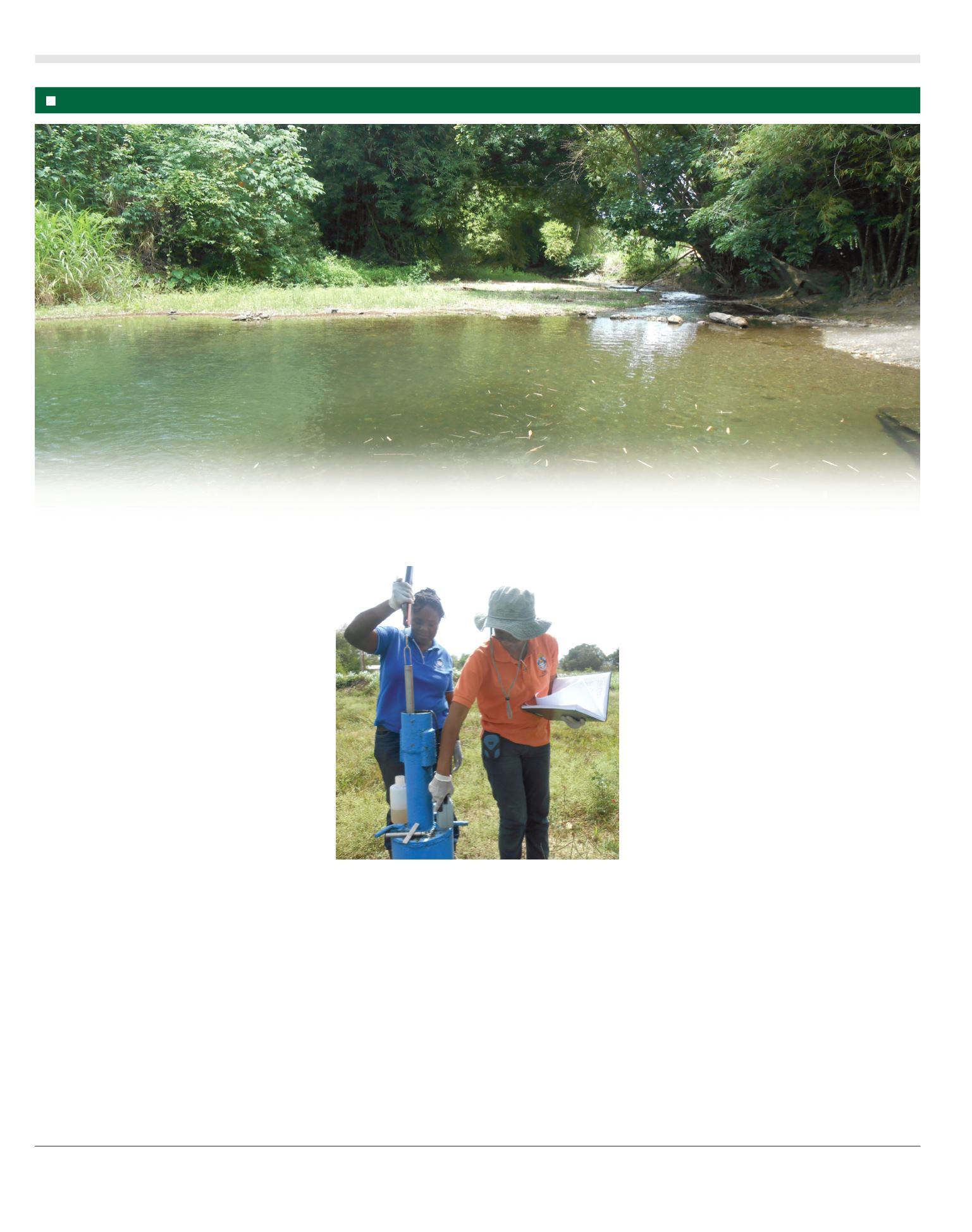
SUNDAY 19 MARCH, 2017 – UWI TODAY
7
GREENER DAYS BY THE RIVER
RESEARCH IN ACTION
Amy Li Baksh is a writer, historian and visual artist. She is currently working for the UWI Campus Museums Committee
and is deeply invested in activism centred on the environment, marginalised social groups and animal rights.
In 2013, a group of UWI
researchers headed by Dr. Denise
Beckles set out to study the impact of the Guanapo landfill
on its environs, primarily the nearby Guanapo River.
“I was just interested in characterising what was going
on in landfills,” said Dr. Beckles, who spent almost three
years with her team doing chemical testing, air pollution
monitoring, hydrological studies and risk assessment to get
a full picture of what was going on in Guanapo. The result
was a 2016 report that detailed the years of work, and all
they had learned from studying the environmental water
like rivers and groundwater, as well as soil, sediment and
air around the landfill.
What they found was that the sediments especially were
contaminated by metals from the landfill, but also from
several other sources like nearby quarrying, agriculture,
and even the people living in the area.
The leachate (contaminated water) from the landfill
was their main focus, and this was where the bulk of their
investigation was aimed.
“It has to go somewhere,” said Dr. Beckles. “A landfill
has to be set up in a locationwith a particular geology so that
the leachate, which is one of the major emission problems,
can be minimised.”
Once the story of river contamination began going viral,
there was widespread concern for the country’s drinking
supply, as the Guanapo River feeds into the Caroni, which is
used as a water source at the Caroni Water Treatment Plant.
Dr. Beckles stressed that their study was not done on
drinking water, and their sample sites were nowhere near
the place where the Guanapo meets the Caroni. “People
were getting very excited about the idea that the water was
not safe and they should start drinking bottled water… and
that is not so, unless you are drinking water directly out of
the river.” Their focus was the landfill, and that was where
they began taking steps to alleviate the problem.
“One thing I learned from this project is how important
it is to have the people that you thinkwill use the information
on your team,” saidDr. Beckles. “Whereas I as a scientist had
certain goals, the person at SWMCOL, for example would
also know what she needs the information for. So we were
able to ensure that our data was useful to them as well. At
the end of the day, everybody is aware and the information
is directly channelled to the people who will use it.”
Even the presence of the research team had a positive
impact on the community. The meetings they held to share
their information with the public were widely attended,
and even drew the attention of then local Member of
Parliament (Mr. Rodger Samuels, MP for Arima). Issues
that the residents had been trying to solve were given more
attention, like installation of box drains and road paving.
The ecological risk assessment that they put together is being
acted on, albeit limited by funding.
“They are trying to change what is going on inGuanapo.
They are trying to do sorting, shredding of plastic, keeping
the waste separate and reducing how much waste actually
ends up in the landfill. In fact, there’s a pilot leachate
treatment plant going up at Guanapo right now.”
While there was quite a bit of misinformation floating
around once the story broke, Dr. Beckles maintains that
“all information is good information” and was glad that
people became curious enough to ask questions and find out
what was happening. She hopes that the increased interest
in Guanapo will create a wider spread of knowledge and
enthusiasm to change the state of waste management in the
country. She sees her role and the role of UWI in general to
inform and raise awareness.
The UWI report “The Impact of the Contaminants
Produced by the Guanapo Landfill on the Surrounding
Environment” is available to any interested parties. For more
information, email
How a UWI team’s research into landfill effects on Guanapo
spurred a movement to help a neglected community
B Y A M Y L I B A K S H
Guanapo River at the “George’s”
sampling site. This site is a
popular spot for recreational
activities in the area.
Dr. Grace-Anne Bent (left) taking a groundwater sample and Dr.
Denise Beckles taking a chemical reading from a monitoring well.
“Our primary recommendation was that they treat the
leachate that was coming out of the landfill, because it was
flowing over land and getting into the water… and that was
taken up wholeheartedly by SWMCOL,” she said.
From early on in the project, SWMCOL and the WRA
were heavily involved, along with other invested groups like
the Guanapo Environmental Community Development
Organisation. Chemistry students were also among those
fromThe UWI who carried out key parts of the research.The
collaborationmeant that there were more human resources
to carry out the intensive studies.
Dr. Beckles stressed that their study was not done on drinking water, and their sample sites were nowhere near the place
where the Guanapo meets the Caroni. “People were getting very excited about the idea that the water was not safe and they
should start drinking bottled water… and that is not so, unless you are drinking water directly out of the river.”


